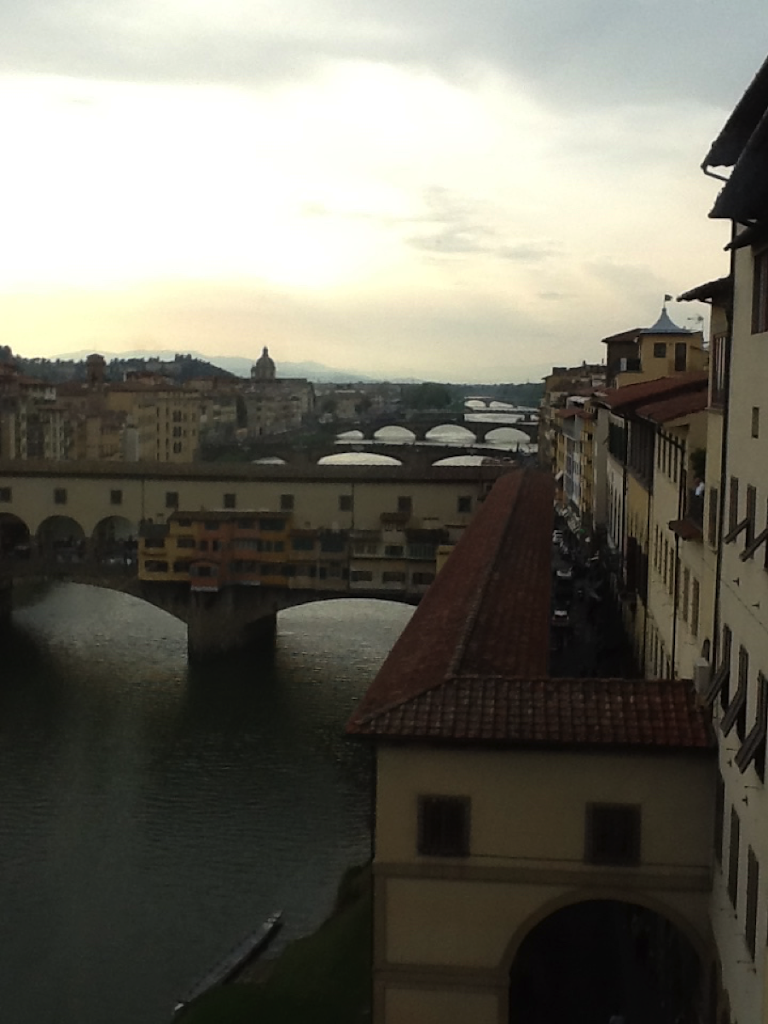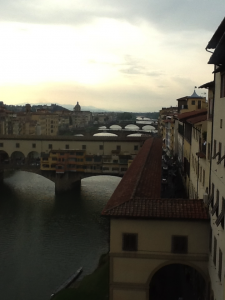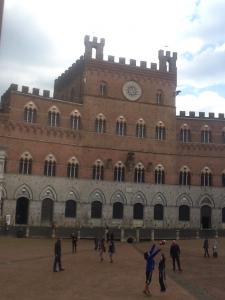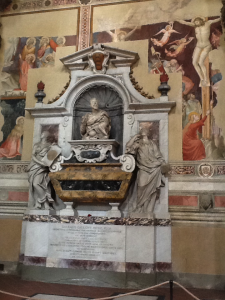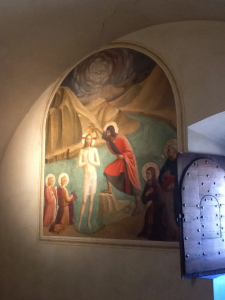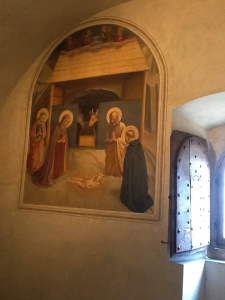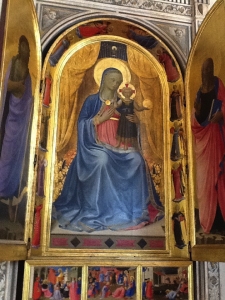Shavuos/Sabbath/Pentecost
2015
30-day Trip to Italy,Florence,Tuscany,Milan
Figure 1 “Florence and The River”…View up the River Arno, Ponte Vecchio from the upper floors of the Uffici Art Gallery, a view not so different as that seen from Dante’s tower house. The River Arno is known as the “Golden River” and inside of the Ponte Vecchio bridge that can be seen here crossing it there are a series of goldsmith and gold jewelry shops.
“Thou hast thy hearing mortal, as thy sight,” it replied to me, “therefore no song is here for the same reason that Beatrice has no smile.” Dante Divine Comedy Paradise Canto XXI
We want to thank President Obama for answering two of our letters to him about our prayers.
In a letter of March 10 he says, “ I believe in an optimistic America that always chooses hope over fear.” We are continuing to pray with you Barack and Michelle and have posted some of the wonderful prayer insights and encouraging words to all of us who have had to face tragic circumstances during our lives from your eulogy for Rev. Pickney at the thoughts on loving kindness weekly meditations which occur in our 49 day yearly prayer liturgy starting the first week after Easter/Passover and proceeding to Pentecost/Shavuous and are supplemented this year by the beautiful pictures from the Dominican Monastery of Savonarola [lived 1452-1498 and burned at the stake by the Catholic Church for trying to improve things] in Florence, Italy and for all of us.
And, thanks to the Gurgevich’s of Gurgevich “Self-Hynopsis” teaching classes in the Andrew Weil group for thanking me twice about not forgetting a one-year old tape and book order. In honor of this I have created a Emile Coue (Gurgevich) Healing Center 2150 subdirectory at prayer subdirectory of the yhwhschofchrist.org website.
Self-Hypnosis, I believe, can be seen as a form of prayer. The trance state referred to in teaching it is very similar to the superconscious Samadi state of contemplative prayer studied by Christian monasteries, Jewish Kabbalah, Hindu Yoga meditators and discussed elsewhere in this prayer blog (see the trip to Africa where I discuss Lynn Brown’s of Unity School of Christianity’s16 prayer steps).
Also, thanks to Jason from David Cooper’s Kabbalah website discussion forum who finally replied to our criticism on the website about Rabbi Cooper’s declaring God to be ‘only’ a verb.
Our thoughts and comments about his reply can be studied at the ‘Upholding the Truth’ subdirectory of our yhwhschofchrist.org website’s prayer directories.
One of our former ourprayergroup contemplative prayer member of our Vicksburg prayers Kevin Casson now of Katmandu, Nepal who is a librarian and teaching English at the Buddhist Ranging Yeshe Institute has marked himself safe on Facebook. He said, however, that buildings just a couple of hundred yards away collapsed and the boys studying Yoga at the Tashi boarding school next door can use donations. We have also sent a little prayer and money help to our 2011 prayer partners, the friend of Maiti Nepal there.
Also, as I finish writing this in July, our city of Vicksburg, MS has had its fourth murder of the year[ we only had 1 last year]. It was a brutal and heinous murder, by a despicable criminal, to an acquaintance of mine living here on our street who I like to talk to while buying Christmas presents for relatives at Peterson’s antiques.
We pray for the peaceful repose of the soul of Sharon Wilson, a neighbor on
Drummond St. in Vicksburg and to comfort here many friends from here brutal
murder. We pray that the violent acts she suffered while passing from will be erased in her spirit as she passes on forward to
a better heavenly existence.
We pray that this murder, the fourth this year in town, shall be the last of
its kind here in our town. We pray that it shall not happen again to any one
here.
And, we hope that our
police department and those charged to protect the public safety gets better
at helping us prevent this type of things from happening.
But, most of all we pray that the light of God will surround all of us here,
that the amazing love of God will enfold us all, that His power will protect
us now and in the future, and His Presence over-watch us so this type of violent acts don’t happen.
Thanks to Jonathan Harrell for sending us the 1929 typewritten notes of our grandparents one-year long world tour which included thoughts about Florence and the Baptist bishop in Italy. As the daughter of the former president of the World Baptist Evangelical Association who with his wife [her mother Maria Hale Gordon] had made a world tour in 1888 [See “Journal of our Journey Maria Hale Gordon and Adoniram Judson Gordon by John Beauregard published by Gordon-Conwell Theological Seminary] she would be helped in the arrangements for her travel by the Baptist bishops in the countries they visited. They had just been married and he, Claude Eustis had recently made a million dollars as an investor in Wall Street. In October 1929 [two weeks before the black Tuesday market crash which signaled the beginning of a 10-year world-wide depression occurred …God forbid that should happen again] , Helen Harrell writes, “Our five days here were rather strenuous, for we wanted to pack all the sightseeing possible, the Uffizi gallery in itself was interesting enough to occupy all the time, had we it to give. We enjoyed visiting the Bargella [and?] Duomo museum (opposite) Musencordia [mispelled], Church of the Trinity where I saw the only copy of the Sistine Madonna that I saw anywhere. The house of Dante was exactly as formerly without the furniture, and a little old man who had been to America and sighed to return took us about….The most sacred spot in the city was the square of the Signiorelli, where Savanarolia was burned at the stake. There is a bronze tablet in the pavement commemorating the spot but the statue is in the Piazza Savonarola In the monastery of San Marco is his cell. This is a beautiful space with charming garden surrounding by the walls frescoes by Fra Angelicca [see photographs of them later in this blog]”
The trip was taken with Cal Berkeley alumni and other AHI University Alumni participants.
We thank our travelling companions on the trip: Julia Freedman Detch and Lewis Detch of Sevena Park Maryland (William and Mary Alumni), Pilar Cartan San Leandro, CA, Susana Darling Fair Oaks California, Ellen Eubanks Monrovia, CA, Dona Reynolds Grosse Point Michigan, Pink White Santa Monica, CA, Sally Stocker Morris Plains, NJ, Les Saxton and Nancy Saxton Ridgecrest, CA, Christi Adams Austin TX, Sandra Tillman and Donald Tillman Inman South Carolina, Jane Stiller Br.ookline MA, Joanne Leonard Ann Arbor Michigan, Nick McCully Piedmont CA, Rebecca Bowman Wincester VA, Rob and Demi Williams Carmel CA, Ron Eggers and Kathy Eggers Lake Oswego, OR, Clyde and Sandra Johnson Courpeville, WA
Many thanks to our very well organized and hard working tour leader Ines Becerra. Born in London she spent most of her childhood in Chile as a result of her father’s position as an international official for the Food and Agriculture organization of the United Nations (UN). She has travelled extensively in Europe and North and South America. She currently lives in Tuscany and is happily married to an Italian tax expert. With all the many eating, sightseeing, and traveling arrangements she made for us, we can verify that she is fluent in English, Italian, and Spanish.
And thanks to Nancy McNeil, Cal-Berkeley Representative who not only created a lot of the arrangements for the trip but also participated in the first week of it.
Saturday Aprii 4, 2014
Arrive at the Florence airport and check-in to the Hotel Risacoli (Is the hotel named for Galileo’s mad cousin of high standing in the cities’ Renaissance society: Baron Risacoli? cf. book by Heilbronn. The hotel’s website said it was a former monastery. In any case I think we can say that everyone in the group enjoyed our 30 day stay there. ) Meet and greet hosted by Cal Alumni representative Nancy MacNeil.
Had a three course Italian meal at the Hotel Risacoli
1) Carpaccio di bresaola e carciofi
2) Risotto con speck e verdure
3) Pave di salmon con verdure e patate
Sunday April 5
Attend Easter services at the Duomo (It is one of the largest Churchs in the world…but not as large as the Milan Duomo as I was to find out). It included the famous fireworks beginning to the procession into the Cathedral. The Baptistry and Cathedral square was packed with tourists and religious pilgrims. Walking tour around the center Florence, the Ponte Vecchio, Piazza Signoria filled with famous statues, Dante’s tower house, ancient town prison, the Bargello.
Lundi April 6
Attended 3 hours of beginning conversational Italian at the Academia Euorpa. Which is a Florence school which goes back to the Medici, who lived near by. Studied nouns.
Then walked to the Piazzi Republica in order to practice ordering Italian coffee and deserts. In the afternoon took a bus to the Piazza Michelangelo and climbed the stairs up to the beautiful Dominican monastery cathedral above the overlook.
The group gathered together to be issued Italian cell phones. We then walked to dinner at the restaurant Da Mammo on Via Gaulo.
1) Parmigiana
2) Ravioli con burro e salvia
3) Penne al chianti
4) Scaloppini di vipello in salsa al vino bianco
5) Insalata mista
6) Panna cotta
Tuesday April 7
Continued language lessons. Talked in Italian about ordering in restaurants free time and leisure.
Wednesday April 8
Language lessons. Talking in Italian about daily activities, shopping in a market,
In the evening walked to the Teatro del Sale Restaurant which is near the mercato (opera and eastern market synagogue district)
1) antipasti vari
2) veroure miste
3) delicious primi and secondi buffet
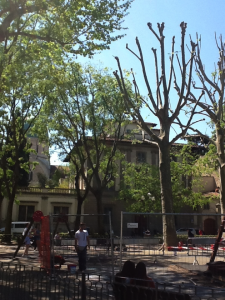
Figure 3 Partially obscured view of the Florence Synagogue from the Piazza Massimo D’Azeglio square in the Jewish District. If you follow the 1 hour and 15 minute walking route in “The English walks in Florence, The Edwardian Residents” published by the British Institute of Florence you will go right past it.“The Florence Jews enjoyed a golden age from the late 19th century to the early 20thcentury. Starting n 1882, after 8 years, a large temple was completed in the Jewish District of the city. The Florentine Jews were subject to changing policies of local rulers over the centuries, especially the Medicis. At one time they lived on the other side of the Arno River. In 1570 Cosim d’Medici, in order to obtain the grand title of Duke from Pope Pius V, created a ghetto in Florence and Siena. He continued, however, to have a liberal policy in Liverno and Pisa.”
“During the persecution [Shoah] about 8500 of the then 45000 Jews living in Italy were deported. 5000 to 6000 escaped to Switzerland, and a remaining 29,000 survived by hiding in rural areas or in the cities. About 1000 fought in the ranks of the Resistance, and one hundred died fighting or were arrested and executed.”
The Guide to Jewish Italy by Annie Sacerdoti
Thursday April 9
Language lessons. Asking for prices, asking for the check.
In the evening had a lecture on Italian Renaissance art at the hotel.
Our teacher talked about the famous Venus of the Oceans, Copper door of the Baptistry (St. John is the patron Saint of Florence) , building of the dome of the Cathedral in 1418 (raising the roof the architect built a series of interlocking ribs to support its new height using mathematical principles… gone were the high arches of the Roman period), Leon Baptisti Alberti said: “What is important in architecdture is correct proportion, light, space, and not decoration”. Donatello scultured lifelike human figures. Boccacio gave lifelike appearance to human figures. An improvement in religious art is carried out by the clergy (Fra Angelica). She talked about how Florence became a great center of humanist trade wealth and European learning after the merchants used some of their wealth to buy ancient manuscripts of lost teachings. The lost teachings were those of Plato, Aristotle, Galileo’s teacher Archimedes, and those of the Neo-Platonists the main one of which was the Mathematician Proclus. These writings were collected from universities around Europe then, more importantly, the time was taken to translate and study them all together. The famous statue of David by Michaelangelo is supposed to be, for instance, an affirmation of the highly ethical aspects of the Florentine society of the time trying to help unify the different waring factions of Italy into the one country of Italy (which did not exist at the time).
Friday April 10
Free day. I took the morning commuter train to Milan. It takes an hour and forty five minutes, stopping only briefly in Bologna. From the train station it only cost 1.5 Euro to travel to the town center and see one of the World’s largest cathedrals at the town center. From there you can walk a couple of block toward the Sforzza Piazza along a beautiful Paris type boulevard. There is a nice glassed in restaurant in the courtyard of the Palace where you can have lunch. If you want to view the Last Supper by Leonardo Da Vinci, at another area in the city, however you need to have made reservations already ahead of time. Some travel photos from the trip.
Saturday April 11
In the morning, our travel group visited the Tuscan town of Carrera, famous for its white marble, which was favored by Michelangelo. We toured the local quarry there and learned about the marble industry.
In the afternoon we continued south to the town of Lucca. Fronted by gardens and huge bastions it is a venerable time capsule of urban Tuscan architecture. Founded by the Etruscans, then colonized by the Romans in the second century B.C. the town retains the street plan of a Roman military camp.
The dinner we had there in the All’olivo was memorable:
1)Timballo di melanzane con riso nero
2)Crepes e sfogliantina di ricotta e spinaci
3) Lasagna ai carciofi tiramisu.
Italian lunch and dinner meals can be quite long [five courses]. At some good restaurants the meal begins with the 1)Antipasti[appetizers], then the 2) Insalata [Salads], then the 3) Primi [pasta] and then the 4) Secondi [meat or fish] course and the 5) Dolci [dessert]
The AHI tour group director recommended the recipes in the following book:
“Cooking with Italian Grandmothers” by Thereoux.
Sunday April 12
Visited the Florence Synagogue. Visited the Dominican monastery at San Marco square. Took a series of photos of the beautiful frescos in the monks cells.
Monday April 13
Continued the morning Italian language lessons. Present tense of verbs.
In the evening had a lecture on contemporary Italy.
What is Italy? Does it really exist? Is it a Platonic form? Is it a geographic expression?
If you asked this question to an American he might say
Yes it exists as One nation under God as the “The U.S. Constitution”
Evening meal at the Il Vezzo restaurant
1)Insalata mista
2)Ri bollina
3) Decustazione di carciofi
4)Straccetti di pollo
5)Mousse di cioccolato bianco con gelee
6)Di lamponi
Tuesday April 14
Continued the morning Italian language lessons. Studied adjectives. Talked in Italian about shopping for clothes.
In the evening we learned to create sumptuous flavors of Tuscan cuisine at the “In Tavola” cooking school across the Arno river.
Fresh egg pasta like they make it in Italy can be made with about 2 1/2 cups of 00 flour, 4 eggs, a table spoon of virgin olive oil, and enough water to make the mixture solidify. 00 means “all purpose Italian flour”. In the U.S.A. and also Italy all-purpose flour means the kind that doesn’t rise [which you would use if you wanted to make bread]. You beat the mixture up in a bowl or use a food processor or blender, then mix lump it together with your fingers until it is solid enough to turn over on a bread board. Then fold it over and place it in a plastic bag to be put in the refrigerator for at least 30 minutes. Otherwise, if you are beginner like me, you won’t be able to knead it with your hands or roll it with a rolling pin.
1)Fresh egg pasta
2 eggs
50g flour of darum wheat
150g flour type “00”
2)Fresh water pasta dough
You can buy a pasta machine from Amazon for $25 or so and if you really want to make the Italian type authentically you can buy the 00 drum wheat flour there too.
Break the eggs salt well. Beat the eggs and slowly begin incorporating the flour into the mixture with a fork. Knead well until smooth an elastic. Gather the dough into a ball, wrap lightly in a plastic wrap and let rest for at least 30 minutes before using.
By machine, cut the ball into 2 equal parts. Working one half at a time , slightly flour, fold in 3 and roll with a pin. Repeat two times. Run the dough through a machine at settings 1,3, and 5, folding and repeating until the pasta is desired consistency.
Wednesday April 15
Continued language lessons. Learning about music in Italian.
Visited with the language class, the Palazzo Davanzati in Florence, a beautifully decorated medieval palace. Viewed a beautiful collection of sewed brocades on display. Walked over to the Palazzo Pitti and Boboli Gardens in the afternoon.
Thursday April 16
Continued language lessons, we a very useful conversational Italian lesson on the vocabulary of lakes, farms, mountains, gardens and were introduced to 15 new verbs. And, in afternoon I walked over to the beautiful Chuise Santi Croce. Then later, as a group we visited the Uffizi Gallery.
Friday April 17
Travelled to Colle di Val d’Elsa a medieval commune known worldwide for its exquisite crystal glassware and art. Took a charming walk through the charming Old Town.
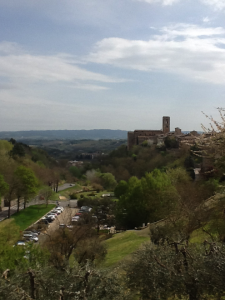
Figure 4 Colle di Val d’ ElsaIn the afternoon we went to Siena to see the beautiful Dumo and I’Campo square where the famous horse race is held.
Figure 5 Il’ Campo , a world heritage site. The Town Hall has the letters JHS displayed on it. This is short for Jesus Christ, is of all humankind, salvation.
Delicious meal at the
Molino il Moro Restaurant
1) Faagottino di pere e brie
2) Bresaola con insalata mista
3) Pici con salsa di pomodor e pecorino
4) Gelato artifianale e fruiti di bosco
Saturday April 18
Free day, Sabbath, rested, did laundry [permitted]. Took a city bus to the Roman city of Fiesole overlooking Florence. Walked up the path to the Saint Alessandro Franciscan monastery overlooking the town square. It has one of the best views of the whole area around Florence. Had a nice conversation with a cleaning man at the monastery who said Einstein used to like to visit the Church there when he was in Florence. Visited the Church of the Carmelite nuns at the Piazza Spirito Sancto. Attended the Opera Madame Butterfly across the Arno at the Anglican Church. It was beautifully performed and accompanied on the piano by the same man who was playing at the music and language school for the students.
Sunday April 19
Free day. Went to the nearby archeological Musuem, ate a small lunch at a café near the Duomo. Went to a wondelful exhibit of bronze statues at he Sfrozza Musuem
Monday April 20
Attended language class. Studied irregular verbs. Italian words for physical descriptions. Walked over to the Gardens of the now Four Seasons Hotels, which was a residence of the English King two centuries ago. Walked up to the top of the stairs of the Duomo tower to see the view of the city from there. Then walked back to the University of Florence’s gardens between the Hotel Riscoli and Four Season’s Hotel gardens.
Evening meal at O’Munaciello
Pizze
Sfogliatella
Pastigra Napolenana
Tuesday April 21
Attended language class in the morning. Studied idiomatic expressions with fare and Italian words for regions,cities, products.
In the evening participated in our second cooking class across the river at Il Tavoli.
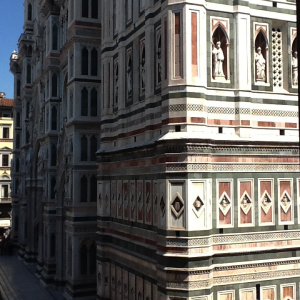 Figure 6 Side view of Florence’s Duomo from a balcony of the Misericordia, showing some of the Saints and Apostles of the Church
Figure 6 Side view of Florence’s Duomo from a balcony of the Misericordia, showing some of the Saints and Apostles of the Church
Wednesday April 22
Language class, our study group then visited the venerable arciconfraternita misericordia di Firenze the oldest charitable institution in the world. It is a emergency ambulance service going back to medieval times and is located just next to the Duomo, serving as a foundation stone of service to help the people of Florence by transporting the sick to hospitals and then praying for them in the building’s beautiful chapel. Today after several outbreaks of the black plague in the Florence during medieval times where 30 % or more of the population died, and 6 or 7 hundred years of service helping others the building is still the main fully functioning headquarters of the cities’ ambulance services. According to our Italian guide (who is a board member) and spoke to us in Italian, from the board room where the above picture was taken. He said, I think, the board members elect their head by placing black and whites balls in a vase or jar. The person who gets the most “black” balls is elected. When the call comes in to the ground floor of the EMS (US term: Emergency Medical Services) main station hall [that someone in the city is in need of help and needs to be taken to the hospital] they ring “one bell” if it is a routine situation, and “two bells”if it is a life critical call. A free ambulance is dispatched from there or one of the other emergency responder stations around the city in order to reach them within minutes. Upon return, in a flagrant violation of what many in the US might argue as confusion of church and state, the EMS people are required to go to the chapel located in the building and spend time meditating and praying for those they are trying to help.
Thinking back to what my Grandmother said was the most sacred spot in Florence when she visited in 1929, I would argue that the place where this picture taken is one of the most sacred places that I visited in Florence. Our guide who took us on an orientation walking tour the first week walked us right by the plaque where Savonarola was burned at the stake without pointing it out and there were huge crowds making it difficult to spot. Perhaps the guide was a Catholic who believed that Savonarola was a “religious fanatic” and not one of our Church Protestant Saints who helped start a Holy Reformation of Christendom. Last year in the posting for Yom Kippur discussing Bible verses in the old Testament about Names of God and Holy places and about “what is the most beautiful [the most sacred] spot in the World” there are some different ideas about this.
Did not our own Saint, Jesus Christ, tell his apostles, among which my Divine Self Andrew is Number One, “Do not look for Me [Jesus Christ] among the dead [at the spot of the Crucifiction where all our souls were saved or in a tomb], but among the living.!”
All the contemplation cells on second floor of the Dominican San Marco monastery museum where the beautiful pictures of the the Gospel story were the only thing to look at as the Monk’s read the Bible and study contemplative prayer and one of which where Saint Savonarola’s bone’s reside seemed very sacred to me.
The monks contemplation cells and prayer chapel at the Franciscan monastery where Einstein used to stop and mediate at when in Florence, situated atop a mountain overlooking Florence from above the city of Fiesole seemed very sacred.
As well as the second floor of the Academia Europa on Via Cavour where some talented intellectual Italians were teaching Americans and Britons how to play the piano, sing, and understand conversational Italian at a world class level.
Had a 45 minute piano lesson at the Academia Europa Florence. It
helped me work on my rhythmic skills in playing joyful and sacred Christian music.
Thursday April 23
Our class had a lot of fun studing Italian language idiomatic expressions and gestures (while making them to each other).
1)Mai che voi? What do you want?
2)Mai sei mattio? Are you crazy?
3)Mai io che posso? What can I do?
4) Stai attente! Watch out (with the look)!
5)Che pauna! (grabbing fingers) How scary!
6)Non vedo l’ora! I can’t wait!
7) facciamo le corna! (make the horns behind the head) If you have the horns you are being cheated on.
[thought about the statue of Moses next to Einstein’s house in front of the Cathedral in city center Bern discussed in last year’s blog about our travel group’s trip to Switzerland.
8) non me ne frega! I don’t care!
Friday April 24
Day trip to the historic hill-top town of San Gimignano, a World heritage site that bosts 14 medieval towers and the Castello di Monsanto winery “home of the famous red-wine Chianti. A dreamy panorama of quiet back roads, lovely hillside towns, hunreds of acres of woodland and of course a winery” [Ines’s words]. The winery was built in 1750 by the Palloni family of Florence and is today owned by the bianchi family. We tasted the wines which are made from handpicked Sangiovese, Canaiolo and other grapes.
A wondelful lunch banquet at the restaurant Il Fondaccio dai dottori in the town of Castellina which was on our route to the winery from San Gimignano:
Tortellini con Prosciutto e panna
Casereccie con verdure
Peposo con pure di patate
Sbriciolata con ricotta e cioccolata
Antipasti vari: melanzane sottolio, zucchine
Alla scapece peperonata, fagioli all’uccelletta
Torta salata di porri e patate
Saturday April 25
Day off. Did a six mile jog around Florence, laundry.
Sunday April 26
Our group went on a day tour to Cordona. We had a wondelful lunch there at the Alla Corte del Sole restaurant, then took a stroll through the town.
Gnocchi con verdure
Farona alle erbette di campo
Finocchi gratinati
Torte di ricotta
Monday April 27
Language course, talking about simple activities. Watched an Italian movie.
Walked over to a trade fair at the Florence Fort. Had lunch at a Japanese restaurant there and bought a pair of shoe inserts.
Went a few blocks from the hotel to the Restaurant Perseus for supper. It is considered the best restaurant for meat in Florence.
Pinzimonio
Antipasto vario
Penne al chianti
Tagliata
Verdurine fritte
Fagioli bianchi
Tuesday April 28
Attended language school, talking about Italian lifestyles. Studied prepositions.
Wednesday April 29
Attended language school. Studied past tense.
Walked across the river with the language class to see a mosaic workshop and have lunch at the Caffe Pitti Restaurant
In the evening attended the Music and Language Academie’s spring recital, a contanti e dei musicist e presentazione dei lavori degli artisti dell’A.E.F (www.aefirenze.it) . Some really talented students performed. There was a percussion ensemble playing the marimbas and a Xylophone, a group of Saxophonist’s (The Zephyros) and some solo opera singers,soprano Samantha Harrington from England, Tenor Thomas Henderson, Soprano Laura Clark, Soprano Laura Canzani. Also, the piano player accompanying the performers was excellent.
Thursday April 30
Finished the 30-day language course. We each stood and during the graduation ceremony read a paragraph in Italian we had written thanking the Academy for its instruction.
Friday April 31
Farewell dinner at the hotel for the travelling group.
Reposting of the seven weeks of seven days metaphysical meditations for counting the OMER with pictures from the San Marco Dominian monastery’s contemplation cells and meditating on how God’s prophetic thoughts are formed inside our souls and spirits from Passover to Shavuous.
Figure 7 Tomb of Galileo inside of the Church of Sante Croce in the city of Florence
Discussion of the importance of Galileo’s life and work to modern science and philosophy and theology, as part of a review of the overall Church’s (Catholic, Protestant, Jewish, Hindu) perspective on his life 700 years later.
References:
Galileo by J.L.Heibron Oxford U. Press
(See the May 2015 issue of the American Mathematical Society (AMS) Notices for a review by mathematicians…not necessarily theologians…of this recently published book. Unfortunately not many of our prominent mathematicians today believe it is possible to be both a mathematician and a theologian like Galileo was, [and still is]. Last year after being asked to donate a brick to the Mathematical Association of America (MAA) I sent in some money and the following inscription to be placed on the brick “When God is One, His Truth is One, YHWH Christ”. Some weeks later I received a letter from the MAA board saying they had voted and that inscription would not be acceptable for a commemorative brick to be placed at the headquarters.)
see also
Lectures on Thought and Effort by L. Ron Hubbard, 1953. Mr. Hubbard defines motion as “change of place and attitude.” Which is a definition combining the distinctions referred to below that Aristotle made between types of local and general motion.
The Trial of Galileo, Aristotelianism, the “New Cosmology,” and the Catholic Church, 1616-1633 by Michael S. Pettersen, Frederick Purnell,Mark Carnes
Galileo, along with Aristotle, was and still is, one of the most important thinkers in the area of mathematics, theology, and physics the human race has produced, He is responsible for not only helping us get rid of an earth centered view of the solar system and an over dependence and acceptance of science and religion upon unchallenged tradition ideas, but also reframing the actual ways and methods science and religion helps us to improve itself by knowing new ideas and ideas about ourselves and these ideas themselves. .
Just 15 years ago or so Pope John Paul II ordered a review of the Christian Church whole discussions with and about Galileo. Although, not a Catholic, but a Protestant I take this as an opportunity for the whole Church of believers in Christ [Catholic, Protestant, Jewish to reconsider things together about these important subjects. And, also to encourage us to perhaps try and understand motion somewhat better than Galileo did. Godel’s incompleteness theorem proved that there are logical boundaries to what we as humans and computers can understand or create. But, the more important truth is that there are no logical limits to what computers and the human mind can understand or create, when we put our computers and minds and the world together under the control of God.
When Galileo was a professor of mathematics and physics at Pisa much of the the way we understand mathematics and physics now did not exist. Real numbers [roughly speaking limits of rational and irrational numbers] which are the key to the way we understand how to use Calculus to study physics weren’t defined yet. Galileo couldn’t use the ratios of time over space to define velocities as we do nowadays.* This was because according to Euclid you could only measure ratios involving quantities of the same type, like distance over distance or time over time. When he conducted the experiments necessarily to determine a formula to represent the path of objects in free all or propelled from a cannon he had to use Euclid axioms and Eudoxian proportion theory along with complicated theorems on mean proportionals and over different types of combinations of different proportions. Decimal numbers had already been introduced as a way of improving on the abacus and Roman numerals. Fibonacci, one of Galileo’s predecessors at Pisa, had explained how to add and subtract using large decimal numbers. But no one understood how to use a measure of time to compute moving velocities and accelerations more than by using approximately geometrical values. Parmendides and Plato and the methods of using limits of areas to exhaust calculations of the areas had been discussed in the past. For, Archimedes had already discovered the philosophy of limits of numbers and volumes of objects.
Aristotle had defined motion as “any kind of change” and he defined local motion as “change of position or locution”. Galileo did not change our understanding of the broader definition but he did change it of what Aristotle called local motion. Nowadays, in addition to reviewing and evaluating the correctness of Galileo’s theological arguments we should benefit by reviewing again how he understood then and what we can understand now what ‘motion’ is. We define motion in terms of functions from the real line [or complex or quaternions spaces which are made up of axes or vector bundles of real continua or real spaces] to the some similar “type” of real lines or continua. Of course, since he, like [Plato, Aristotle, Parmenides and the ancient Greeks, didn’t yet understand what a continua was and how it is defined mathematically] we should be able now to define what we want to call motion better than he did. A robot can use the monomial equations of algebraic geometry as data structures in order to calculate using functions or mappings where to go. While thinking about this, one thought I had was that we knowing what we know now about computer science and expert systems [see some of my papers on this at the website] could define a concept of “psychological motion” [emotion] for a robot. The ‘places’ as Dr. Grothendeick has taught us on a manifold or topos defined algebraic geometrically are different than those that we define through Euclidean metric geometry and spatial Newtonian knowledge given to us by assuming certain axioms considering Space to be an absolute flat [uncurved] Newtonian manifold.
All movement in space and time occurs in what the Buddhists call the “form” realms. But, we know[or at least i believe] that we can represent
movement in the “formless realms” by represent objects that don’t occur in space and time [are eternal] in our consciousness. If you believe philosophically and theologically , as I do, and a lot of recent scientific studies have confirmed that mind [intentional consciousness] having intentions existing both inside of our own minds and outside of them, and matter [ not intentional consciousness] can both be represented mentally, conceptually, them we should be able to move “formless” objects in our mind thereby affecting “form” that exists outside of it. After all, when we remove knowledge of forms from our minds there is always a little of it left inside of us all, because in order to create the knowledge you have to represent it in us. Consider and thinking deeply about all of this perhaps we can mathematically represent the movement of both object and mental functions of them in something that mathematicians now call “categories” of thinking mathematically. For, a long time in the last two centuries mathematicians tried to understand all of mathematics just in terms of what we call “sets of objects”. But, now most of us recognize we need to broaden our thinking to include not only “sets of mathematical objects” but “categories of objects and functions[ arrows that represent a ” field” of movement of the objects from a particular point of view [ what is called a monad having a slightly different definition in computer science and mathematics at the present time..”]
* See Stillman Drakes wonderful translation of Galileo’s Two New Sciences, along with its historical appendix for a more detailed explanation of what I am talking about here.
The motion I am talking about would take place in a 2nd level reasoning structure superimposed as an algebraic place on the manifold. It would occur in either a ‘top-down’ movement from the assumption of a ‘final cause’ or faith therein such as some current Prolog language interpreters do using backward thinking unification of clauses. Or it would occur in a ‘bottom-up’ object oriented type of thinking or movement in knowledge instantiation. Is it possible to combine these two types of thinking, the scientific and the theological? Yes, it you arrange the assumptions and conclusions of the thinking rules according what is called in computer science a topological sort algorithm and use the type of ‘mixed-chaining’ instantiation that I described in my paper written for the U.S.Army Conference on Computing using an example from the Corps of Engineers Seattle District river-bar formation rules. Since what a function is depends on the data structures we use to define its mapping, is using such an artificial intelligence, functional consciousness, definition of motion going to teach us new physics like Galileo was taught new physics when he improved on Aristotle’s idea of what motion is?
Aristotle argued from logic that local motion was of three kinds: 1: linear, 2:circular, 3:mixed of linear and circular. He said this motion occurred because of natural tendencies in the element themselves and not because of acceleration of velocities of motion of bodies relative to each other represented as being effected or caused by a “force field”.
Under these assumptions linear motion cannot occur naturally without some external agent impressing itself on the elements that are moving. However, circular motion will continue to move indefinitely. In fact it is the archetype of how we define “theologically” eternal movement as something that has an “end”[a purpose] in a “beginning” and a “beginning”[continuation of itself] in an “end”, like circles do. And, under these assumptions because the nature of objects vary the natural speeds at which they fall and rise should also vary.
Galileo argued from experiments that he conducted both linear and circular motion occur because of a universal force (which Newton later defined using his universal coefficient of attraction) occurring at all times between two bodies. He found by experiment (dropping objects from the tower of Pisa and measuring the time it took them to reach the ground) that heavier objects do not fall more quickly than lighter ones. From this we can conclude that the acceleration of their velocities is a constant and it was this constant that Newton later measured more precisely.
Newton, however, did not understand how “energy” can be represented in a formula that connects mass and velocity in order to determine it. For Newton energy was represented as a “momentum” or massxvelocity and not as a “vis-viva” as mass velocity squared as Leibniz understood it [it wasn’t until a hundred years later that a French aristocratic lady named L’Chatelet explained this to us.
In Galileo’s age, space itself was not represented in the calculations using coordinate axes and vectors in space as we do now. Although the beginnings of perspective and projections were beginning to be studied geometrically by Renaissance artists, the differences between what we now call metric projective geometry and metric Euclidean geometry were not understood. Space itself was considered only a place or location for objects and our sense impressions of them. The concept of what we now call in mathematical physics of a manifold [a collection of places for objects and our thoughts about them, not all of which are sense impressions but which can be studied mathematically]. This requires the notion of what a collection or sets of objects are. Also, the idea a ‘field’ of locations or places for objects and our thoughts about them [requiring for its final definition a better understanding of what a motion is and what a ‘force’ is] was not understood. Galileo went back to Aristotle and improved on his method of using conservation of momentum to solve problems in physics. He used a two dimensional scheme of how vertical and horizontal axes are balanced geometrically to represent velocities and accelerations in a geometrical wau of visualization that helped solve problems in the displacement of water volumes by ships and trajectories of falling bodies fired from cannons.
Only later were Newton, Descartes, Riemann, Weierstrass building on their study of Galileo’s discussions and dialogues about how these ideas are to be defined outside of a context of theology but within one of science and logic was modern mathematics and physics able to accomplish all it has.
Aristotle being one of the best human philosphers and logicans that has ever existed, he had confused everybody, about the nature of space and motion (which affects how we think we can visualize temporal and eternal spiritual beings with our souls).
We now consider Galileo and not Aristotle right as to whether bodies can move from there own nature {they can’t}. Most people now would say that bodies do not have a separate ‘nature’ such as a consciousness. But, the answer to this question depends on how we define ‘bodies [matter]’ and ‘nature’. If we are metaphysical ‘dualists’ and separate everything into ‘body’ and ‘mind’ and ‘spirit’, then the mind is considered separate because it is capable of having ‘consciousness’ of which is something that is capable of having ‘intentions’.
“A spirit is defined as something as not being composed of ordinary ‘material’ things and not subject to ‘ordinary material’ laws. Ordinary matter being composed as we know of something that has the qualities of ‘mass’, ‘volume’,’velocity’,’solidity’.
Ordinary material laws referring to the laws of physics as we currently understand them. Light, for instance, is not composed of ordinary matter. But, its behavior does compose to ordinary physical laws. And, we know from the laws of quantum mechanics that it can exist in different ‘states’ or ‘quantum levels’ corresponding to the frequency of how it vibrates the ‘space’ it is existing in. It is therefore not spiritual. Neither is a magnetic field. “
Keith Campbell “Body and Mind”.
And, to our friend, professor Einstein and Michael Faraday, and James Clerk Maxwell we owe the idea that the “vis-viva” formula for energy, the mass of an object [possibly atomic like a light photon], and its speed can be connected all together in the wonderful expression E = m x c^2.
Is there some way that a generalized understanding of what “motion” is can also be generalized to a better understanding of what the other two concepts, that of mass, and that of velocity squared, are in the above equation? Modern day mathematicians and physicists are nowadays trying to do this using an idea of expressing the formula for this in terms of what is called a “Lagrangian” on a “vector bundle” [or some other algebraic geometric type of space]. All this is still very much up in the air and subject to change because we don’t understand what the concept of “dark energy” or “dark matter” is that we are trying to find in order to make our astronomical observations come up right. And, if you add the possibly that the type of mental “psychic” motion we are discussing might require a new definition of what “mass” is we are really confused. Such a space that we have been talking about algebraically would probably have what we call non-commutative motion. And, geometrically, to have to have some “metric” structure would entail having attached to it what we call a “quadratic form” [possibly a form calculated over not just the real numbers, but the complex, or quaternions, or octernions], or Cayley numbers”. But, we would also need a way of reducing the number of possibilities of such forms [either by experiment or considerations of combinatorial symmetry of space translations and tilings] in order to determine which unique solution among the many possibilities God had to choose.
For one interesting method to combine the algebra, the geometry, of the space translations and tilings of quadratic forms see my 1974 UC Berkeley Mathematics Thesis ” VoronoiReduction of Quadratic Forms”.
God, of course, assuming He exists, as we do, because He is omnipresent has the qualities of both existing in space [being a body] and because He is omnipotent, of having consciousness and intentions [having a mind.], and not being composed of ordinary ‘material’ things and not subject to ‘ordinary material’ laws [ He is omnipotent, being a Spirit even a self-existing One composed of the nature of ‘Oneness’ or so we believe through faith].
As our friend Dante, as discussed in this blog above, has explained because we have ‘Hope’ in God we have the ‘Certain expectation of future glory’. We have a ‘Certain’ sense of Hope in this in the sense that I have discussed how our friend Pascal defined Hope more precisely for this a century later when he created the mathematical area of what we now call Probability Theory. In these realms we are dwelling as a result of our own free will and His saving, redeeming, sanctifying, justifiy grace with Him. We are dwelling in different levels in these realms of Heaven, Earth, Heaven or Earth, Heaven and Earth in some sense which we can have visions of like Dante but it very hard to define using the laws of science. The realm of ‘Earth’ is the realm of material Oneness, the realm of One substance which our bodies which occupy ‘one’ material space live and realize our hopes and dreams in the past, present, and future with God’s help.
Highlights from the 2015 Omer Count of the YHWH School of Christianity:
Netzach of Malkuth, Hod of Malkuth, “Standing by our friends and loving our enemies. We are a Lamb of God, healing others.”
Along with a few of my recent tweets, some quotes from Saint Thomas (a Dominican monk), inspired from discusssions with our trip group have been added to the last week of meditations from a 2008 blog.
I AM that (in the past) who I AM (now) and will be
(in the future).
Jesus Christ is, for all of humankind, salvation, redemption, sanctification, justification>
With God’s help (while we are representing Him) we can build the building of our own salvation and redemption. It is even in ourselves and has boundaries all around us.
Seven Thoughts About Loving Kindness
[from a 2008 posting at ourprayergroup.blogspot.com… for a 2011 version see the blog for that year]
Figure 8 The Baptism of Christ, by Fra Angelica cell 24, First floor dormitories, First Corridor
These photos are of frescos produced between the years 1438 and 1445
“In this scene the landscape dominates uncontested over the figures, with a pearly colour-scheme creating a surreal effect. The slight figures announce, in a certain formal simplicity the work of one or more of the assistants to the master” Musuem pamplet
(Chesed)**
1st
day of the Omer count, Passover April 3,2015
Chesed of
Chesed
Loving kindness is compassionate
and forgiving
(it does not keep a record of wrong)
2nd
day
Gevurah of
Chesed
Loving kindness is stronger than death
(Song of Songs)
3rd
day
Tiferet of
Chesed
Loving kindness seeks more to give
than receive. (It is beautiful)
4th
day
Netzach of Chesed
Loving kindness is patient
(while having integrity and supporting the rights of others)
5th
day
Hod of Chesed
Loving kindness is obedient and submissive
to God’s
will (it therefore shares in his glory)
6th
day
Yesod of
Chesed
Loving kindness rejoices not in wrong
intentions, but in the truth (2 Corinthians)
7th
day
Malkuth of Chesed
Loving kindness fears God and does
not consider what will happen to
itself.
(This is its royalty)
**note: For those who believe we are at many moments of our lives living
right now, in the fullness of time in God’s heavenly present moment we will
return to this topic considering passages from the Book of Romans, Chapter
12, during week seven of our Pentecost/Shavuos this year.
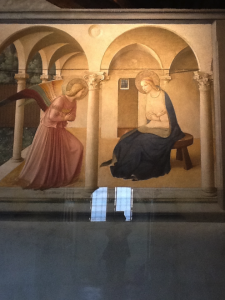
Figure 9 First floor dormitory, Musuem of the Dominican San Marco monastery, cell in the first corridor:The Annuciation by Fra AngelicaThree novelities of the then new age painting are contained in it 1) Fra Angelica’s use of light, 2) Accurate depiction of Florentine architure, 3) severe spatial perspective
April 10, 2015
Going back in time additions June 28, 2015 (see earlier other prayer blog discussion postings, several years ago, of after the fact of writing of the blog, editing it in order to understand how to we can go back, with the help of God’s grace, in time in order to set things right in our lives)
Some thoughts about God’s loving kindness (grace) expressed by President Obama in his eulogy to the nine people slain in the Mother Emmanuel AME (African Methodist Episcopal Church) by a deranged shooter, guided by the teachings of a local religious and racial hate website, claiming to represent the Confederate flag (which has a horizontally tilted Christian Cross of St. Andrew, my Soul and Spirit, on it )
and was used by misguided confederate rebels as a battle flag in our nations tragic and costly civil war two centuries ago. This horrible conflict left the US South in ruins and this shooting shows we still, are in the process, as I write this blog in 2015, of trying to recover from all of its scars.
“And I’m convinced that by acknowledging the pain and loss of others, even as we respect the traditions and ways of life that make up this beloved country — by making the moral choice to change, we express God’s grace. (Applause.)
We don’t earn grace. We’re all sinners. We don’t deserve it. (Applause.) But God gives it to us anyway. (Applause.) And we choose how to receive it. It’s our decision how to honor it.”
US President and prayer partner Barack Obama
Seven Thoughts About Goodness and Justice
(Along with Gevurah…strength)
1st day of the weekly count, 8th day of the omer
count
Chesed of
Gevurah
“The quality of mercy(justice) is not strained.”
(its definition is not tightly controlled)
William Shakespeare
“Let justice roll like water and righteousness
Like a mighty stream.” Jewish Prayer Service
2nd day of the weekly count, 9th day of the omer
count
Gevurah of
Gevurah
“Justice is freedom combined with equality.”
Mortimer Adler, Six Great Ideas *
3rd day of the weekly count, 10th day of the omer
count
Tiferet of
Gevurah
Justice is everyone and everything
participating in its virtue (its
good
according to its kind or its concept) Plato, The Republic
4th day of the weekly count, 11th day of the omer
count
Netzach of Gevurah
No good fruit (end) can come from a bad tree
(bad means). No bad fruit (end) can come from a good
Tree(good means).” Jesus Christ according to the
Gospel of Matthew
Good defines evil, evil defines good, good comes
From good, evil from evil.”
Sefirah Yetzirah, Book V.
5th day of the weekly count, 12th day of the omer
count
Hod of
Gevurah
Good – What is desirable for its own sake
6th day of the weekly count, 13th day of the omer
count
Yesod of
Gevurah
divine order—a rightful (according to a sound
everlasting principle)** procession of truth
from
Beginning as good faith to its
correspondence
And completion as a realization in one of us or
All of us or the World around us.
7th day of the weekly count, 14th day of the omer
count
Malkuth of
Gevurah
‘You meant it for evil, but God meant it for good.”
Joseph to his brother, story in the Torah
*An idea is a representation in our minds of a thought. A concept can be
distinguished from a perception in that it has a likeness class (that is
likeness or non-visual intellectual thought as opposed to an image or
perception). Concepts themselves have likeness classes. Therefore a great
idea is a synonym for a likeness class of a concept.
** Being divine, this correspondence can only take place inside of a field
of being which has its existence as a part of God’s name. Furthermore, in
order for God to have a name he must be a unique individual, that is, a one.
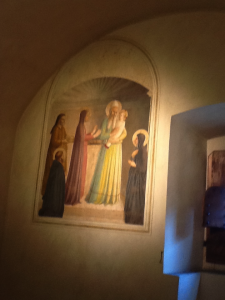
Figure 10 The Presentation by Fra Angelica, cell 10, First Corridor, First floor dormitory cellsSaint Peter the Martyr can be seen on the left. The female figure on the right is difficult to identify.
April 17
Seven Thoughts About Beauty
(Tiferet)
There is an philosophical argument to be made that we cannot and we should not attempt to define what “beauty” is. See the wonderful book by my fellow mathematicians and theologians James Bradley & Russell Howell, “Mathematics, Through the Eyes of Faith” Chapter 7. Aesthetic objectivism is the belief that beauty if a property of objects and is independent o of an observer’s awareness. Aesthetic subjectivism however, claims that there are no objective standards to observed and judge beauty with. Here we shall follow a different path, which is both objective and subjective, in order to keep faith with our liberal Protestant beliefs as outlined theologically previously in this blog and which given that we do believe that the idea or concept of beauty can be defined in a Platonic sense, that it can also then be realized as believed and summarized by the famous saying of another fellow mathematician and theologian, Blaise Pascal. “One should give definition to the defined.”
Here is a summary, given in the theological mathematical reference above, of a list of some of the properties we might want beauty to have if we are going to try and define it:
1) Pleasing to the senses
2) symmetry
3)Infinity
4) Surprise/paradox
5) Relationship/depth
6) Elegance
7) Harmony
8) Brevity/simplicity/economy
9) Alternation of tension and relief
10)Revelation
11) Originality
12) Power/fruitfulness
13) Complexity
The Dover reprint book, “The Divine Proportion: A Study in Mathematical [and Natural] Beauty” by H.E. Huntley contains some gems of the beautiful properties of Fibonacci numbers [see also my discussion in the blog on the Africa trip of how Pascal proved some of his important properties of the “Arithmetic Triangle” which he fascinatingly used to compute binomial coefficients. If tilted at a 45 degree angle the coefficients mysteriously become Fibonacci numbers.
Here are some of the non-theological attributes of beauty in mathematics taken from G.H. Hardy’s book “A Mathematicians Apology”.
1)economy of expression
2)depth
3)unexpectedness
4)inevitability
5) seriousness
which it is pointed out also are good characteristics of poetry. Thus, we would argue that Dr. Hardy needs to include some of those characteristics from the theological reference in his list.
1st day of the weekly count,15th day of the omer
count
Chesed of
Tiferet
“Beauty is controlled grace.”
Leonardo da Vince
Renaissance Christian Definition
2nd day of the weekly count, 16th day of the omer
count
Gevurah of
Tiferet
“Awareness is a mirror reflecting the four
elements. Beauty is a heart that generates
Love and a mind that is open.”
Thich Nhat Hanh,- Buddhist Gatha ***
3rd day of the weekly count, 17th day of the omer
count
Tiferet of
Tiferet
“Beauty is understanding that which is
desirable for its own sake. Love is aspiring
Upward toward eternal beauty.”
Saint Augustine, Confessions.
4th day of the weekly count, 18th day of the omer
count
Netzach of
Tiferet
“And, why do you worry about clothes? See
how the lilies of the field grow. They do not labor
Or spin. Yet I tell you that not even Solomon in
All his splendor was dressed like one of these.
If that is how God clothes the grass of the field,
Which is here today and gone tomorrow and is
Thrown into the fire, will he not much more
Clothe you. O you of little faith?”—Jesus Christ
Gospel of Matthew
5th day of the weekly count, 19th day of the omer
count
“
Hod of Tiferet
“As long as we have bodies, we must inhabit the dwellings prepared for us by
our good sister the Soul in her vast powers of labourless creation.”
Plotinus, Second Ennead, Chapter 9, verse 18. The Great Books, Edited by
Mortimer Adler, U. of Chicago Press.
The beautiful is that which pleases us on being seen.”
Saint Thomas Aquinas
“The beautiful is that which pleases us upon being contemplated.”
“If he proclaims something to be beautiful, then he requires the same liking from others, he then judges not just for himself but for everyone, and speaks of beauty as if it were a propter of things.”
Immanuel Kant
6th day of the weekly count, 20th day of the omer
count
Yesod of
Tiferet
“Truth is beauty and beauty truth, that
is all you know and all you need to know.”
Keats—viewpoint of a poet
“Your love, O YHWH, reaches to the heavens
Your faithfulness to the skies. Your righteousness
Is like the mighty mountains, your justice like the
Great deep…For with you is the fountain of life,
In your light we see light.” View of King David
About why God is beautiful
7th day of the weekly count, 21 day of the omer
count
Malkuth of
Tiferet
“We must always remember that beauty is a partial thing,
that cannot be identified with what pervades the whole;
nor can several objects be stated as everything.”
Plotinus ibid, verse 17.
“Pretty is as pretty does.” Protestant
Christian saying passed down in the Calohan
Family (from Alma May Calohan) to her
Daughter Virginia Calohan Harrell
*** Quoted from “Present Moment, Wondelful Moment: Mindfulness Verses for
Daily Living.”( 1990) by Thich Nhat Hanh with permission of Parallax Press,
Berkeley California.
Figure 11 Crucifix and Mourning Virgin, cell 22, first floor, first corridor dormitories, Fra Angelica,
“The painting is characterized by an elaborate style. The plastic and spatial definition of the Virgin betrays the direct hand of the master along with one assistant
Seven Thoughts About Patience and Integrity
(Netzach)
1st day of the weekly count,22th day of the omer
count
Chesed of Netzach
“Let not mercy and kindness forsake
you.”
Sanctify the name of God
with our love
“Withold not good from those to whom it is due, when it is in the power of
your hand to do it.”[Romans 13:7; Gal. 6:10]*
2nd day of the weekly count, 23 day of the omer count
Gevurah of
Netzach
Exalt and lift up the name of God*
“Keep sound and godly wisdom and discretion.”
“Be not afraid of sudden terror and panic.”
“For the Lord shall be your confidence, firm and strong, and shall keep your
foot from being caught.”
3rd day of the weekly count, 24th day of the omer
count
Tiferet of
Netzach
Bless the name of God
bring it into our consciousness
“Be not wise in your own eyes; reverently fear and worship the Lord.”*
4th day of the weekly count,25th day of the omer
count
Netzach of Netzach
“Lean on, trust in, and be confident in the Lord with all you heart and mind
and do not rely on your own insight or understanding.”
*
Rest in the name of God
(with patience)
5th day of the weekly count, 26th day of the omer
count
Hod of
Netzach
Give glory to the name of God
“Happy is the man who finds skillful and godly Wisdom, and the man who gets
understanding. For the gaining of it is better than the gaining of silver,
and the profit of it better than fine gold…more precious than rubies; and
nothing you can wish for is to be compared to her. [Job 28:12 -18] Length of
days are in her right hand, and in her left hand are riches and honor. Her
ways are highways of pleasantness, and all her paths are of peace “* #
6th day of the weekly count,27th day of the omer
count
Yesod of
Netzach
Praise the name of God
(in eternal life)
“Do not despise or shrink from the chastening of the Lord; neither be weary
or impatient about or loathe or abhor his reproof. For whom the Lord loves,
he corrects, even as a father corrects the son in whom he delights.” *
7th day of the weekly count, 28th day of the omer
count
Malkuth of
Netzach
Honor the name of God
“Honor the Lord with your capital and sufficiency [from righteous labours]
and with the firstfruits of all your income; so shall your storage places be
filled with plenty.” *
* Most of these thoughts are contained in the 3rd chapter of the Book of the
Proverbs of King Solomon
# For those who gain wisdom, will eventually learn to have peace of mind,
and, as my Buddhist prayer partners teach, peace of mind is, dear friends,
our most precious attainment and highest happiness. For if we have this, God
can supply us with the rest of the riches of the glories in Christ he has
prepared for us through the divine order of his providence and the hidden
protections that the small, but important, parts of each of us play in his
great plans for all of us (the contributions of each of us being tied
together in a huge and complex network of salvation, the stronger for the
fact that the temporary loss or transformation of any part of it can be made
up by the reserve forces contained in the rest).
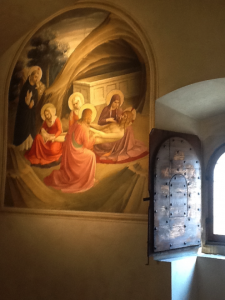
Figure 12 Lamentation over Christ deposed from the Cross, Fra Angelica, cell 2, first floor dormitories, first corridor.
The figure of the Dominican Saint, Saint Dominic appears for the first time in this scene. He will reappear in some of the other ones. The measured rhythms of the figures, the bare settings, and delicate colours, produce a very spiritual effect.
April 31th
Seven Thoughts About Obedience and Glory
(Hod)
Some twofold thoughts from the Birkat H’shir, Blessing of Song
Which is part of the 15 expressions of praise of God in the Yishtabach
prayer
1st day of the weekly count, 29th day of the omer
count
Chesed of
Hod
b’arachot v’hodaot
blessings and thanks
2nd day of the weekly count, 30th day of the omer
count
Gevurah of
Hod
k’dehshah v’malchot
holiness and dominion
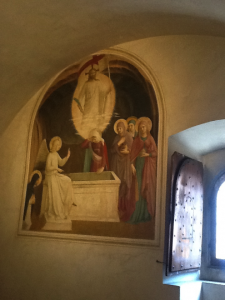
Figure 13 The Marias at the Empty Tomb by Fra Angelica,, cell 8, first floor dormitories, first corridor“With its subject material concentrated in the narrow cave, the fresco is organized as an extended play of mental references. Saint Dominic is in the left corner. The vision of Christ resurrected is in the mind of the Virgin Mary, surprised by the discovery. The chromatic experiences produce an overall harmonious effect.”
3rd day of the weekly count, 31st day of the omer
count
Tiferet of
Hod
t’ehllah v’tiferet
psalm singing and beauty
4th day of the weekly count, 32nd day of the omer
count
Netzach of
Hod
Rest,eternally, in the name of God
(with patience)
5th day of the weekly count, 33rd day of the omer
count
Hod of Hod
az
v’mem’shalah
strong help and power
6th day of the weekly count, 34th day of the omer
count
Yesod of
Hod
hallayl v’zim’rah
(praise or veneration and melodies)
7th day of the weekly count, 35th day of the omer
count
Figure 14 The Nativity by Fra Angelica, cell 5, first floor dormitories, first corridor
“Here the traditional scene of the nativity is enriched by two Saints, St. Peter the Martyr of Verona and Saint Catherine of Alexander, worshipping the Christ child along with St. Joseph and the Virgin Mary”
Malkuth of Hod
song and praise
Seven Thoughts About The Foundation of Our Righteousness
(Yesod)
May 9, 2015
1st day of the weekly count, 36th day of the omer
count
Chesed of
Yesod
Watchfulness
“Blessed are the peacemakers, for
They are the children of God.”
2nd day of the weekly count, 37th day of the omer
count
Gevurah of
Yesod
Zeal
“Blessed are they that hunger and thirst
For righteousness, for they shall find it.”
3rd day of the weekly count, 38th day of the omer
count
Tiferet of
Yesod
Cleanliness
“Blessed are the merciful, for they shall find
mercy.”
4th day of the weekly count, 39th day of the omer
count
Netzach of
Yesod
Separation from the World-
“Blessed are you who are persecuted
for my sake, for great is your reward
5th day of the weekly count, 40th day of the omer
count
Hod of
Yesod
Purity–
“Blessed are the pure in heart,
For they shall see God.”
6th day of the weekly count, 41st day of the omer
count
Yesod of
Yesod
Saintliness–
“Blessed are they that mourn,
for they shall be comforted.”
7th day of the weekly count, 42th day of the omer
count
Malkuth of Yesod
Fear of God–
“Blessed are the meek and poor in Spirit,
for theirs is the Kingdom of Heaven.”
St. Paul’s beautiful words, which teach us how to pray
for what God wants for all of us to have happen:
“For in this hope we were saved.
But hope [the object of] which is seen is not hope.
For how can one hope for what he already sees?
But, if we hope for what is still unseen by us,
we wait for it with patience and compromise.
So, too the Holy Spirit comes to our aid and bears us up
in our weakness;
for we do not know what prayer to offer nor how to offer it
up worthily as we ought,
but the Spirit himself goes to meet our supplication and pleads
in our behalf with unspeakable yearning and groaning too deep
for utterances.
And, He Who searches the hearts of men knows what is in the mind
of the [Holy]Spirit [what his intent is],
because the Spirit intercedes and pleads [before God] in behalf
of the saints according to and in harmony with God’s will [Ps. 139:1,2]
Romans 8:24-26
“Moreover,[let us also be full of joy now!] let us exult and triumph in our
troubles and rejoice in our sufferings, knowing that pressure and affliction
and hardship produce patient and unswerving endurance. And, endurance
(fortitude) develops character [ approved faith and tried integrity]. And,
character produces [the habit of] joyful and confident hope [of eternal
salvation]. Such hope never disappoints or deludes or shames us, for God’s
love has been poured out in our hearts through the Holy Spirit Who has been
given to us.”
Romans 5:3-5
May 14th, 2015

Figure 16 Saint Dominic worships the CrucifixSeven Ways We Serve Others
(Malkuth)
1st day of the weekly count, 43rd day of the omer
count
Chesed of
Malkuth
By generosity:
“Give till it hurts”. Saint Teresa of Calcutta
“Never lag in zeal and in earnest endeavor;
be aglow and burning with the Spirit, serving the Lord.”
Romans 12:11
2nd day of the weekly count, 44th day of the omer
count
Gevurah of
Malkuth
By Friendliness:
A friend in need is a friend indeed.
“Contribute to the needs of God’s people[sharing
in the necessities of the saints]; pursue the practice
of hospitality.”
Romans 12:13
3rd day of the weekly count, 45th day of the omer
count
Tiferet of
Malkuth
By seeing good in others:
with God’s help,We see the Christ in you.
“[Let your] love be sincere (a real thing).”
Romans 12:9
4th day of the weekly count, 46th day of the omer
count
Netzach of
Malkuth
By standing by our friends:
We will walk with you till the Son of God always shines.
“hate what is evil [ loathe all ungodliness, turn in horror
from wickedness], but hold fast to that which is good.”
Romans 12:9
“Rejoice with those who rejoice [sharing other’s joy]
, and weep with those who weep [sharing other’s grief].”
Romans 12:15
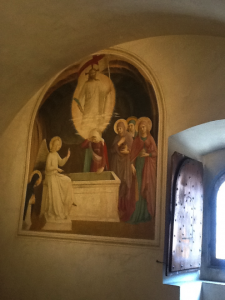
Figure Angel guarding and Christ overwatching The Empty Tomb. The fresco is called
The Marias at the Empty Tomb by Fra Angelica, and is located at cell 8, first floor dormitories, first corridor 5th day of the weekly count, 47th day of the omer
count
Hod of
Malkuth
By loving our enemies:
we are the Lamb of God who takes away the sins of the World.
“Bless those who persecute you [who are cruel in their attitude
toward you]; bless and do not curse them.”
Romans 12:14
“Repay no one evil for evil, but take thought for what is honest
and proper and noble [aiming to be above reproach] in the sight of
everyone.”
Romans 12:17, Proverbs 20:22, II Samuel 16:12
“Love one another with brotherly affection [as members of one family]
giving precedence and showing honor to one another.”
Romans 12:10
2015 Omer count, Netzach of Malkuth, Hod of Malkuth: “Standing by our friends and loving our enemies.We are a Lamb of God healing others.”
·
Although we cannot not love God, it is possible to love ourselves more than Him…which does not make sense, for He creates and saves us.
“Since no one can hate himself or God, evil is hatred of one’s fellow man.” Dante, Canto 25 Purgatorio as translated by Stanley Applebaum
·
The most loving thing that God can do for us is that which is both hopeful and faithful for Him and all of us. We don’t need to ask for it.
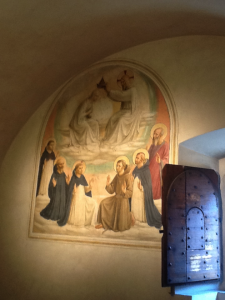
Figure 17 Crowning of Christ in Heaven
More
6th day of the weekly count, 48th day of the omer
count
Yesod of
Malkuth
By setting a good example:
we are the holiness of what is holy
Inside of those who are holy.
“Rejoice and exult in hope; be steadfast and patient
in suffering and tribulation; be constant in prayer.”
Romans 12: 12
Some people say they do not want to know everything about those they love. But, Saint Thomas Aquinas teaches us otherwise.
“You seek to know everything of the beloved person [God dwelling inside of them, for instance]”.
The following quotes are taken from the internet wikepedia article on Saint Thomas.
“It is written (1 John 4:16): “He that abideth in charity abideth in God, and God in him.” Now charity is the love of God. Therefore, for the same reason, every love makes the beloved to be in the lover, and vice versa…the beloved is said to be in the lover, inasmuch as the beloved abides in the apprehension of the lover, according to Philippians 1:7, “For that I have you in my heart”: while the lover is said to be in the beloved, according to apprehension, inasmuch as the lover is not satisfied with a superficial apprehension of the beloved, but strives to gain an intimate knowledge of everything pertaining to the beloved, so as to penetrate into his very soul.”
Summa Theologia I-II, q. 28, art. 2 Saint Thomas Aquinas
“it is to be observed that four proximate effects may be ascribed to love: viz. melting, enjoyment, languor, and fervor. Of these the first is “melting,” which is opposed to freezing. For things that are frozen, are closely bound together, so as to be hard to pierce. But it belongs to love that the appetite is fitted to receive the good which is loved, inasmuch as the object loved is in the lover…Consequently the freezing or hardening of the heart is a disposition incompatible with love: while melting denotes a softening of the heart, whereby the heart shows itself to be ready for the entrance of the beloved.”
Summa Theologia I-II, q. 28, art. 5 Thomas Aquinas
“The third principle [way doing good to another may give pleasure] is the motive: for instance when a man is moved by one whom he loves, to do good to someone: for whatever we do or suffer for a friend is pleasant, because love is the principal cause of pleasure.”
Summa Theologia I-II, q. 32, art. 6 Saint Thomas Aquinas
7th day of the weekly count, 49th day of the omer
count
Malkuth of
Malkuth
By taking responsibility
“We are servants of the servants of the Lord.”
Dante describes the nature of the receiving of Divine prophecy:
“I tell, not ask, what thou wishest to hear, for I have seen it where everywhere and every when are centered.”
“Not for the gain of good unto Himself, which cannot be, but that His splendor might, in resplendence say, I AM; in His own eternity, outside of time, outside of every other limit, as it pleased Him, the Eternal Love disclosed Himself in new loves. Nor before, as if inert, did He lie; for neither before nor after did the moving of God upon these waters proceed.”
Divine Comedy Heaven Canto 29
Additional Prayers associated with Counting the Omer
( starting with the second day of Pesach and continuing 49 days until
Shavuot). This prayer which is said along with the Omer count after Pesach
(and on other Holy days) is sometimes called the 42-letter name of God by
Orthodox Jews. It is hidden inside of thousand of pages of prayers in
several dozen of volumes. However, since we believe that you cannot
copyright the name of God , it is included here translated:
“We beg you? With the strength of your right hand’s greatness, untie the
bundled sins. Accept the joyful prayers of your people, purify us with your
awesomeness oneness. Please strong One, guard those who encourage your
uniqueness. Bless them, purify them, show them pity, may your righteousness
always recompense them. Powerful Holy One, with your plentiful goodness
guide us. One and only Exalted One, depend on your nation, which speaks
about Your holiness. Accept our prayers, knower of mysteries. Blessed is the
Name of His glorious Kingdom forever.”
And, just for good measure and the benefit of all of us …here is an
additional , even more ancient transliterated prayer, associated with what
is called the 11-letter (11 Hebrew letters that is) name of God, that
according to the Torah, the prophet Moses said to ask God for his sister
Miriam’s healing. ” Ayl Na Raphaa… Na Lah.” It can be translated
as, “Please Lord…please heal her.” Please heal the spirit of our lady (the
Shekinah, whose body is the Church of all believers) our divine companion
whose spirit is surrounded by the souls of four archangels. It comes from
some of the first Torah portions in the book of Numbers. Traditionally it is
read and prayed as a community in the congregations the 1st Sabbath after
Shavuous.
Sometime later after Moses healed Miriam with this prayer, God’s Spirit in
Moses descended on the prophet Elijah, a Man of God, (the word of the LORD
came unto him) and he obeyed it in order to heal a widow who feed him and
with whom he sojourned. Then, with God’s help, he blessed…resurrected,
revived and brought back the soul and spirit and body of her Son to
her. “By this she knew that he was a Man of God and that the word of the
LORD in his mouth was truth.”
1 Kings 17:8-16(17-24).
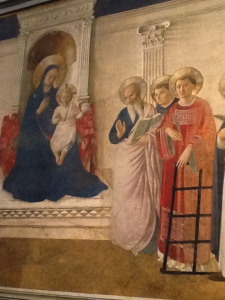
Figure 18 Virgin of the Shadows. Fra Angelica, right side of the first corridorThis fresco is known as the “Virgin of the Shadows” due to the effect of light from the leaves of the capitols, invested from natural light from the windows. It includes some of the patron Saints of the monastery(Dominic, Cosmas, Damian, Mark, John the Evangelist, Thomas, Lawrence and Peter the Martyr (some of which are on the left side of the fresco which was not photographed).
Figure 19 Fresco of my idea of “The Unknown Virgin and Child” I cannot remember which among the many Churches in Florence and Tuscany that we visited that I took this photo at.

 Figure 6 Side view of Florence’s Duomo from a balcony of the Misericordia, showing some of the Saints and Apostles of the Church
Figure 6 Side view of Florence’s Duomo from a balcony of the Misericordia, showing some of the Saints and Apostles of the Church



